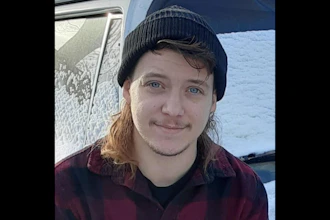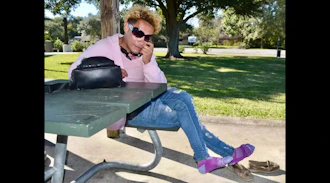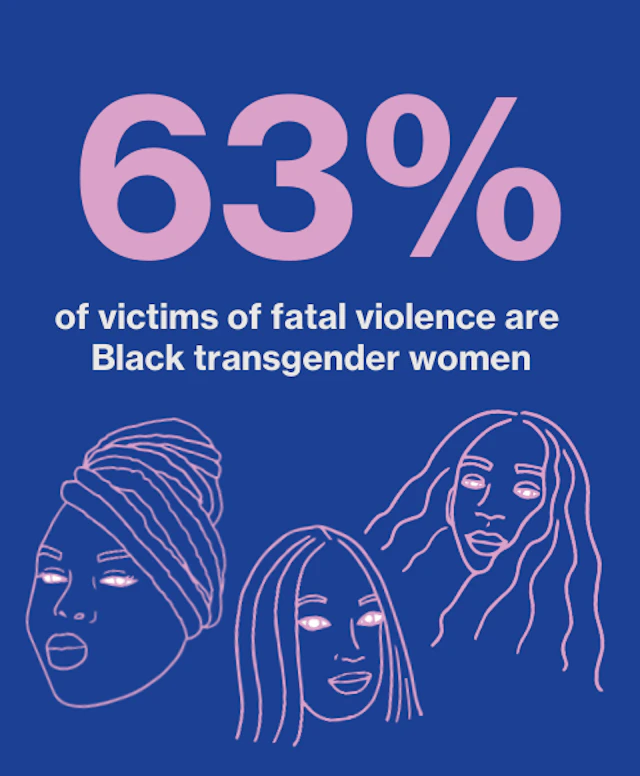Cookies in use
Report
An Epidemic of Violence 2022
Fatal Violence Against Transgender and Gender Non-Conforming People in the United States in 2022
Human Rights Campaign Foundation, November 2022. Updated December 5, 2022.
An Epidemic of Violence 2022
Table of Contents
FROM JAY BROWN
“Fatal violence against transgender and gender non-conforming people is the tragic result of a society that devalues our lives, with Black and Brown trans people facing significantly higher rates of harassment, bias and physical violence. This year, we also saw anti-transgender lawmakers passing a record number of discriminatory bills, including bans of lifesaving, medically necessary gender-affirming healthcare. These attacks fuel more stigma against transgender and non-binary people, especially aimed at the youngest among us. It is a stigma that too often ends our lives.
When lawmakers discuss bills banning transgender and non-binary youth from accessing medical care, playing school sports or using restrooms, it sends a message that even from an early age transgender and non-binary people are different and unwelcome. When media companies give a platform to transphobic content rather than telling the full and rich stories of our lives, it sends a message that trans lives aren’t valuable. When social media companies fail to enforce their own policies and allow transphobic speech and disinformation to flourish on their platforms, it puts our community and our allies at serious risk. Racism, sexism and pervasive stigma against transgender and non-binary people are all deeply ingrained in our culture, creating a toxic reality for our community. But as we’ve seen from the past, society can change. It must.
As we once more honor our dead, we must continue fighting for the full equality and liberation of transgender and non-binary people."
Jay Brown (he/him) , Senior Vice President, Programs, Research & Training , Human Rights Campaign Foundation

FROM TORI COOPER
"In 2022, we’ve seen at least 34 transgender and gender non-conforming people killed in an epidemic of violence threatening our community. These victims had families and friends, hopes and dreams. None of them deserved to have their lives stolen by horrific violence. Most of the victims were Black trans women, a tragedy that reflects an appalling trend of violence fueled by racism, toxic masculinity, misogyny and transphobia and the politicization of our lives. We need everyone to join us in empowering transgender leaders, building safer, stronger communities and reducing stigma. We cannot rest until all transgender and gender non-conforming people can live our lives safely as our full selves."
Tori Cooper (she/her) , Director of Community Engagement for the Transgender Justice Initiative , Human Rights Campaign Foundation
Introduction
At least 34 transgender and gender
non-conforming people have been killed in
the U.S. since the beginning of 2022.1

We say “at least” because the stories detailed in this report very likely undercount the number of transgender and gender non-conforming people who were killed in the United States this year. Although advocates, bloggers and media groups have elevated the epidemic of violence against transgender and gender non-conforming people in the past several years, data collection is often incomplete or unreliable when it comes to violent and fatal crimes against transgender and gender non-conforming people. Some victims’ deaths may go unreported, while others may not be identified as transgender or gender non-conforming.
In this report, we shed light on the epidemic of violence taking the lives of transgender and gender non-conforming people. We remember the individuals who were taken from us in 2022 and provide analysis of data we have collected on fatal violence against transgender and gender non-conforming people since 2013 — the year the Federal Bureau of Investigation began reporting on hate crimes motivated by anti-transgender bias. As you will see, that data reveals disturbing trends. Finally, based on these statistics, we provide action items that can help end the violence.
This report comes amidst a shocking wave of anti-transgender legislation. Nationwide in 2022, 25 anti-LGBTQ+ bills having been enacted, including 17 anti-transgender laws across 13 states. Overall, more than 145 anti-transgender bills were introduced across 34 states. The result is a new record for anti-transgender legislation being introduced and enacted in a single state legislative session since the Human Rights Campaign began tracking legislation. These bills include bans on transgender youth from playing sports or using bathrooms and locker rooms in accordance with their gender identity. The include bans on doctors providing safe, legal, and medically necessary gender affirming medical care. They include school book bans and “Don’t Say Gay or Trans” style laws restricting LGBTQ+ school curriculum. Each of these bills aims to restrict the areas of public life where transgender people can freely and openly participate as their true selves.
These bills, however, are just one component of the stigma, bias and systemic discrimination transgender and gender non-conforming people face from an early age, heightening their vulnerability to violence. As detailed further in HRC’s report, “"Dismantling a Culture of Violence Understanding Violence Against Transgender and Non-Binary People and Ending the Crisis", transgender and gender non-conforming people face multiple forms of sigma, which results in lower access to status, power, and resources, and higher risk of discrimination, including in employment, healthcare, and housing. Together, this contributes to higher risk of poverty and homelessness /housing insecurity, social isolation, and worse physical and mental health outcomes, which in turn results in increased risk for violence.
Such stigma, bias and discrimination compounds for transgender and gender non-conforming people who hold multiple marginalized identities. Transgender women and transgender people of color are at elevated risk of fatal violence. Such risk is especially true for Black transgender women, who comprise the vast majority of victims of fatal violence against transgender and gender non-conforming people as they face the daily injustices of racism, sexism and transphobia.
Until we as a country address and dismantle the barriers faced by transgender and gender non-conforming people, they will continue to face higher rates of discrimination, poverty, homelessness and violence.
Yet, at the same time, even in the face of physical danger, hatred and discrimination — sometimes ruthlessly endorsed and enforced by those at the highest level of our government — many transgender and gender non-conforming people live courageously and overcome unjust barriers in all corners of our country. In recent years, barriers have been broken by transgender and non-binary candidates like Danica Roem, Andrea Jenkins, Admiral Rachel L. Levine, and Sarah McBride, and their victories have inspired even more transgender and non-binary candidates to run.
In life, each of the individuals memorialized in this report went to extraordinary lengths to live authentically. In death, we must honor their truth and bravery with action.
1This report was last updated Nov. 29, 2022. It was originally published a week prior (on November 17th, 2022) in honor of Transgender Day of Remembrance, reflecting data collected from January through mid-November of 2022. On the eve of Transgender Day of Remembrance 2022, Daniel Aston and Kelly Loving were two of five people tragically killed at the mass shooting at Club Q in Colorado Springs. We have amended the tabulations in this report to include Daniel and Kelly. In addition, we cover the stories of the three other victims of the Club Q shooting in a special section below. For an ongoing, updated list of 2022 victims whose stories are uncovered past this publish date, please visit this page: hrc.im/2022FatalViolence
Who is transgender or gender non-conforming?
Violence is often committed against those who do not present themselves in a way that aligns with their sex assigned at birth. Because of this, we track cases involving the transgender and non-binary community, as well as cases where the individual presented in a gender non-conforming way.
For the purpose of this report, we use the phrase “transgender and gender non-conforming” to describe a collective community of individuals whose gender identities, expressions and/or lived experiences differ from — and may in fact transcend — what is typically associated with the sex they were assigned at birth. We use the phrase, as it is the most broad and accurate phrase we can use without being able to directly ask the victim about their gender identity
As with any language that attempts to succinctly capture the human experience, the usage of these terms and sense of identity among the transgender and gender non-conforming community varies widely. Meanwhile, virtually every culture has its own terminology and differing concepts of gender, including who is considered to be transgender or gender non-conforming. Below is a series of definitions that are critical to know as you read this report.

In Memoriam
In commemoration of Transgender Day of Remembrance, HRC remembers the lives and mourns the loss of transgender and gender non-conforming people from 2022. Below we honor each of the 34 lives lost this year. To read more about each of these people and the lives they lived, see our memorials for them here: “Fatal Violence Against the Transgender and Gender Non-Conforming Community in 2022."

Tatiana Labelle
Chicago, Illinois

Kathryn “Katie” Newhouse
Canton, Georgia

Kenyatta ‘Kesha” Webster
Jackson, Mississippi

Miia Love Parker
Chester, Pennsylvania

Ariyanna Mitchell
Hampton, Virginia

Fern Feather
Morristown, Vermont

Ray Muscat
Independence Township, Michigan

Nedra Sequence Morris
Opa-locka, Florida

Chanelika Y'Ella Dior Hemingway
Guilderland, New York

Sasha Mason
Zebulon, North Carolina

Brazil Johnson
Milwaukee, Wisconsin

Shawmaynè Giselle Marie
Gulfport, Mississippi

Kitty Monroe
Cordova, Tennessee

Martasia Richmond
Chicago, Illinois

Keshia Chanel Geter
Augusta, Georgia

Cherry Bush
Los Angeles, California

Marisela Castro
Houston, Texas

Hayden Davis
Detroit, Michigan

Kandii Reed
Kansas City, Missouri

Aaron Lynch
McLean, Virginia

Maddie Hofmann
Malvern, Pennsylvania

Dede Ricks
Detroit, Michigan

Mya Allen
Milwaukee, Wisconsin

Acey Morrison
Rapid City, South Dakota

Semaj Billingslea
Jacksonville, Florida

Tiffany Banks
Miami, Florida

Daniel Aston
Colorado Springs, Colorado

Kelly Loving
Colorado Springs, Colorado

Amariey Lei
Wilikinsburg, Pennsylvania.
Amariey Lei, a 20-year-old Black transgender woman, was shot and killed on New Year’s Day, the first day of 2022, in Wilkinsburg, Pennsylvania.
Amariey, also known as Myara, was a lifelong dancer who grew up in Wilkinsburg, a borough bordering Pittsburg, where she graduated from Woodland Hills High School. She was a dancer and beloved coach for the Lady Diamonds, a hip-hop and majorette dance team.

Duval Princess
Jacksonville, Florida.
Duval Princess, a 24-year-old transgender woman, was shot and killed in Jacksonville, Florida, on January 3.
Duval was just beginning to live as her authentic self at the time of her death. She was a well-known hairstylist and active member of the LGBTQ+ community in Jacksonville, Florida, and was in the early stages of transitioning. Family members, friends and clients remembered her on social media days after her passing, referring to her as being “so sweet and genuine.”

Cypress Ramos
Lubbock, Texas.
Cypress Ramos, a 21-year-old Latina trans woman, was killed in Lubbock, Texas on February 13.
Cypress loved her local LGBTQ+ community, often attending and supporting local drag performances.

Naomie Skinner
Highland Park, Michigan
Naomi Skinner, a 25-year-old Black transgender woman, was described by a friend as being a “very outstanding person.” Her sister said Naomie lived a “fabulous life.” Naomie was fatally shot by her boyfriend on February 12, 2022 near Detroit in Highland Park, Michigan.

Matthew Angelo Spampinato
New Castle, Delaware
Matthew Angelo Spampinato, a 21-year-old white trans man, was a victim of a hit-and-run car crash in New Castle, Delaware, on Feb. 9, 2022. Spampinato worked as a barista at Starbucks and was described as bright and kind by employees. One coworker said, “He was always so selfless. He would always ask how everybody was doing even when he wasn’t having a good day himself.”

Paloma Vazquez
Houston, Texas
Paloma Vazquez, a Latina transgender woman living in Houston, Texas, was a member of the Organización Latina de Trans en Texas, an organization for Latina trans women based in Houston. She was fatally shot on February 22, 2022. On social media, the founder of the organization wrote, “Vuela alto Paloma y que no te alcance nunca más el odio de este mundo. Descansa en paz,” which translates to, “Fly high Paloma and may the hatred of this world never reach you again. Rest in peace.”

Tatiana Labelle
Chicago, Illinois
Tatiana Labelle, a 33-year-old Black transgender woman, was a Chicago native who was loved by her friends and family. She was a fan of Mariah Carey and Patti LaBelle. On March 18, 2022, Labelle was found dead in Chicago. Although details are currently unclear, her death has been ruled a homicide and detectives are continuing to investigate.

Kathryn “Katie” Newhouse
Canton, Georgia
Kathryn “Katie” Newhouse, a 19-year-old Asian-American neurodivergent transgender woman, was an Illinois native who had a passion for hiking, sightseeing and advocating for trans rights. On March 19, 2022, she was killed by her father in Georgia before he died by suicide using the same weapon.

Kenyatta ‘Kesha” Webster
Jackson, Mississippi
Kenyatta ‘Kesha’ Webster, a Black transgender woman, was found dead in Jackson, Mississippi on Saturday, March 26, 2022. She had just turned 24-years-old in February. On April 1, more than a hundred people attended the balloon release honoring Webster. There, Webster’s mother passionately called for justice for her daughter’s death. “She had plenty of love. She didn’t deserve that.”

Miia Love Parker
Chester, Pennsylvania
Miia Love Parker, a 25-year-old Black trans woman, was fatally shot in Chester, Pennsylvania on April 1, 2022. She was a bright light in many lives and was also a fan of Pose.

Ariyanna Mitchell
Hampton, Virginia
Ariyanna Mitchell, a Black trans girl, is recalled by her family as “truly unique, funny, and loved by everyone." Ariyanna Mitchell was killed on April 2, 2022 in Hampton, Virginia.

Fern Feather
Morristown, Vermont
Fern Feather, who used both she/hers and they/them pronouns, was kind and free-spirited. The 29-year-old trans woman was known to bring joy to everyone around. Her friends remember her making others feel valued wherever she went. Fern Feather was killed in Morristown, Vermont on April 12, 2022.

Ray Muscat
Independence Township, Michigan
Ray Muscat, who worked at a grocery store, was described by coworkers as a “kind soul who had a glowing smile.” On May 8, 2022, Muscat was shot and killed by his girlfriend in Independence Township, Michigan. According to police reporters, Muscat’s girlfriend also killed her brother and her body was found the next day; she died from a self-inflicted gunshot wound.

Nedra Sequence Morris
Opa-locka, Florida
Nedra Sequence Morris, a 50-year-old Black transgender woman, was “strong, feisty, opinionated” and loved talking to her many friends on the phone. On May 14, 2022, Morris was fatally shot in Opa-locka, Florida. More than 100 people held a vigil at an intersection where Morris’ body was found. A cousin spoke at the memorial, stating “We pray, that God speaks to us, we don’t go out with a vengeance, that we know justice will be served."

Chanelika Y'Ella Dior Hemingway
Guilderland, New York
Chanelika Y’Ella Dior Hemingway was known for a smile as bright as her future according to news reports. She was born and raised in Guilderland, New York and was close with her mom, cousins and her niece. She graduated from Albany High School and studied at Hudson Valley Community College. She turned 30 at the beginning of May. She has just graduated from the University of Albany with a bachelor’s degree where she was the recipient of a 2022 Spellman Academic Achievement Award.

Sasha Mason
Zebulon, North Carolina
Sasha Mason, a 45-year-old Latina transgender woman, was part of a large, loving family. She was a beloved family member and friend to many. On social media, Sasha’s friends and family remembered her as a sweet, kind and generous person with a beautiful smile who cherished her friends and family.

Brazil Johnson
Milwaukee, Wisconsin
Brazil Johnson, a Black trans woman, was a passionate LGBTQ+ activist, a beloved daughter and a talented chef. In an interview with CBS58 News, the mother of Brazil Johnson, Bernita Gildart, said her daughter was a passionate chef and that the kitchen was like a haven for her. Johnson was killed in Milwaukee, Wisconsin on June 15, 2022.

Shawmaynè Giselle Marie
Gulfport, Mississippi
Shawmaynè Giselle Marie, a 27-year-old Black transgender woman, was born and raised in Gulfport and attended Gulfport High School. She worked as a personal care assistant and as a certified nursing assistant for almost four years. She was shot and killed in Gulfport, Mississippi on June 21, 2022. On social media, her family and friends remembered her as a “loving, funny, kind and genuine person.”

Kitty Monroe
Cordova, Tennessee
Kitty Monroe a Black trans woman, was a beloved friend and loving mom to her four small dogs named Chyna, Milan, Tokyo and London whom she posted countless photos of on social media. She was killed outside Memphis in Cordova, Tennessee, on June 29, 2022.

Martasia Richmond
Chicago, Illinois
Martasia Richmond, a Black transgender woman, received loving tributes on social media after she was killed in Chicago on July 11, 2022.Tori Cooper, HRC's Director of Community Engagement for the Transgender Justice Initiative, said "at 30 years old, she should have decades ahead of her to spend with those she loved. Her death was not only unjust but part of an alarming trend of anti-transgender violence in Chicago and in this country at-large."

Keshia Chanel Geter
Augusta, Georgia
Keshia Chanel Geter, a 26-year-old Black transgender woman, was traveling with a friend when she was fatally shot in Augusta, Georgia on July 20, 2022, outside a motel. Initial reports from local media misgendered Keshia. “Keshia Chanel Geter lived her truth as a Black transgender woman," said Tori Cooper, HRC’s Director of Community Engagement for the Transgender Justice Initiative. “She should still be alive today to embrace those she loved and continue living a bright and full life.”

Cherry Bush
Los Angeles, California
Cherry Bush lived in the Sylmar neighborhood of Los Angeles, California, where she was experiencing homelessness. At 48-years-old, Bush was shot and killed on July 5, 2022. On social media, her brother called her his “oldest friend.”

Marisela Castro
Houston, Texas
Marisela Castro was planning a birthday party celebration with friends and family. Tragically, on July 29, the eve of her birthday, Marisela was shot and killed in the Northshore neighborhood of Houston, Texas. According to her friend Jorge Luis Lizardo, as quoted in the Houston Chronicle, she was a “bright” and “sunny” person who had never made enemies.

Hayden Davis
Detroit, Michigan
Hayden Davis’ interests were wide-ranging, from fashion and the Kardashians to skincare and makeup. Her smile was bright and she had an active presence on social media. The 28-year-old Black trans woman was shot and killed in Detroit on July 25, 2022.

Kandii Reed
Kansas City, Missouri
Kandii Reed, who also went by Kamila Marie Swann and Dee Dee, was killed in Kansas City on July 24, 2022. Information on her personal life is scarce, although we know enough to say that the 29-year-old Black trans woman was a model and a performer who was doubtlessly loved and appreciated by those closest to her.

Aaron Lynch
McLean, Virginia
Aaron Lynch, a 26-year-old trans man, was shot and killed by police in McLean, Virginia on July 7, 2022. Aaron, who was experiencing a mental health crisis, was first unsuccessfully tased by police after some back-and-forth discourse, resulting in one of the police officers shooting him four times. Police officers had originally responded to a 911 call to Aaron’s house with a trained mental health co-respondent and returned a second time without one after not initially finding Aaron on the premises.

Maddie Hofmann
Malvern, Pennsylvania
Maddie Hofmann, a 47-year-old trans woman born in Korea and raised in the U.S. by their adoptive family, was killed by police in Malvern, Pennsylvania on May 19, 2022. According to a GoFundMe organized by a family friend, Maddie was one of six siblings. They had a deep bond with their younger sister, Emily, who was also adopted from Korea.

Dede Ricks
Detroit, Michigan
Dede Ricks, a 33-year-old Black transgender woman, was shot and killed in Detroit on August 27th, 2022. Just before 3:40 a.m., Dede was found dead in her home in Detroit with gunshot wounds. A suspect has been arrested and charged with second-degree murder and felony firearm, according to the Wayne County Prosecutor’s office.

Mya Allen
Milwaukee, Wisconsin
Mya Allen, who was also known as Regina Allen, was a 35-year-old Black transgender woman who was full of joy and laughter. Mya was active on social media, often posting selfies of her beautiful outfits and makeup. She was also a member of Sisters Helping Each Other Battle Adversity (SHEBA), a local advocacy, empowerment and support group for Black transgender women. Mya was killed on August 29 in Milwaukee, Wisconsin.

Acey Morrison
Rapid City, South Dakota
Acey Morrison, a 30-year-old Two-Spirit person, was a “kindhearted, down to earth, joyous, respectful, and loving soul” who was a “helpful and giving person who was always there for her family and friends.” She was shot dead in Rapid City, South Dakota on August 21.

Semaj Billingslea
Jacksonville, Florida
Semaj Billingslea, a 33-year-old trans man, graduated from Florida Youth Academy before attending Florida State College at Jacksonville. He was a fan of Megan Thee Stallion and cared deeply about his friends. On September 21, Semaj was killed in Jacksonville, Florida.

Tiffany Banks
Miami, Florida
Tiffany Banks’ family and friends remember her as a “sociable and beautiful butterfly.” When she came around, they say, there was “never a dull moment.” They say she loved to sing and dance. Tiffany, a 25-year-old Black trans woman, was killed in Miami on October 1,2022. Her death is the fourth known killing of a Black transgender person in Florida.

Daniel Aston
Colorado Springs, Colorado
Daniel Aston, a 28-year-old transgender man, was a well-known bartender at Club Q in Colorado Springs. His parents, Jeff and Sabrina Aston, described him in an interview as “...the happiest he had ever been. He was thriving, and having fun, and having friends… he had so much more life to give to us and to all of his friends and himself.” He was killed in the mass shooting at Club Q on November 20, 2022.

Kelly Loving
Colorado Springs, Colorado
Kelly Loving, a 40-year-old transgender woman, was killed in the Club Q mass shooting in Colorado Springs on November 20, 2022. Kelly’s sister, Tiffany Loving, said “She was loving, always trying to help the next person out instead of thinking of herself. She just was a caring person.” Kelly’s friend, Natalee Skye Bingham, said “She was a tough woman… she taught me how it was to be a trans woman and live your life day to day.”
REMEMBERING AND HONORING CLUB Q
On November 20th--Transgender Day of Remembrance--LGBTQ+ people around the world awoke to the devasting news of a mass shooting the night before at Club Q, an LGBTQ+ club in Colorado Springs. A total of 5 people were killed, including two transgender individuals, Daniel Aston and Kelly Loving, whose stories are listed above. Below, we also memorialize the three other individuals who were killed at Club Q.
While they were not transgender, we include Ashley, Derrick, and Raymond’s names and stories here in acknowledgement of the devasting reach of the epidemic of anti-LGBTQ+ violence and hate, which touches LGBTQ+ people and allies alike.

Ashley Paugh
Colorado Springs, Colorado
Kelly Loving, a 40-year-old transgender woman, was killed in the Club Q mass shooting in Colorado Springs on November 20, 2022. Kelly’s sister, Tiffany Loving, said “She was loving, always trying to help the next person out instead of thinking of herself. She just was a caring person.” Kelly’s friend, Natalee Skye Bingham, said “She was a tough woman… she taught me how it was to be a trans woman and live your life day to day.”

Derrick Rump
Colorado Springs, Colorado
Derrick Rump, 38, was a bartender at Club Q who previously lived in Pennsylvania before finding his home in Colorado Springs.
Friends shared how he was a “loving and caring” person and helped others find community when they couldn’t elsewhere.

Raymond Green Vance
Colorado Springs, Colorado
Raymond Green Vance, 22, visited Club Q to watch a drag performance with his girlfriend and her family on the night of the attack.
Loved ones remember him as having “the sweetest heart” and that he “meant well to everyone.”
Updates on 2021 Deaths
After HRC’s 2021 report was published, 12 more transgender or gender non-conforming people were killed, bringing the total number of recorded deaths up to 59 —the highest number HRC has recorded since tracking began in 2013. The total number of recorded incidents of fatal violence against transgender and gender non-conforming people between 2013-2021 increased from 256 to 268 . Below are memorials and updates on the additional individuals who lost their lives in 2021 after our 2021 report was released.

Danyale Thompson, a 35-year-old Black trans woman, was killed in Memphis, Tennessee, on Nov. 13, 2021. Tori Cooper, HRC Director of Community Engagement for the Transgender Justice Initiative, said “Having lost yet another Black transgender woman to such tragic means is heartbreaking, but also serves as a reminder that we must continue to fight for the safety of our community, especially when it comes to gun control.”

Cris Blehar, a 65-year-old white transgender woman, was a beloved family member and friend. According to her obituary, Blehar was a former law enforcement officer for the U.S. Air Force and retired from United/Continental Airlines. Blehar’s cousin Mark Stephens said that she was “an amazing mother and a wonderful person. She had so much love and brought a smile to many. She had a hilarious sense of humor that will live on through those that knew her."

Nikai David, a 33-year-old Black trans woman, was a model and social media influencer who aspired to one day own her own clothing boutique. Her friend Ashlee Banks remembers her as being a “sweet” person. David had just celebrated her birthday a week before being fatally shot in Oakland, California, on Dec. 4, 2021.

Ke’Yahonna Stone, a 32-year-old Black trans woman, was about to further her activism work for the trans community through a new job with Trans Solutions and Research & Resource Center when she suffered a gunshot to the head after attempting to intervene in a fight at a nightclub in Indianapolis, Indiana. She was pulled off of life support two days later and died on December 28, 2021. Latroya Rucker, a friend of Stone who was with her at the time, told reporters that the local trans community in Indianapolis is “hurting.”

Za’niyah Williams, a 21-year-old Black trans woman, was, according to her friend on social media, “a very sweet and smart young lady and always ripped the runway when she dressed up.” Williams was found dead on Dec. 20, 2021 after a hit and run car crash in Houston, Texas.

Nikki Turietta, a 31-year-old trans woman, loved her family with whom she had recently spent the holidays. Turietta was born and raised in Albuquerque, New Mexico, and graduated from Amy Biehl High School. According to Jen Struck, Turietta’s aunt, she was “a character” and a “completely free spirit” who had traveled across the United States and internationally. Turietta was found fatally shot in Albuquerque on Dec. 31, 2021.

Rubi Dominguez, a Latina trans woman, was a victim of a hit and run car crash in Arlington, Texas on July 16, 2021. Rubi’s sister, Monica, described Rubi as “a happy, social, humorous person” who “made people laugh.”

Keeva Scatter, a 34-year-old Black trans woman, was found fatally shot in Baton Rouge, Louisiana, on October 15, 2021.

Martina Caldera was “an amazing person, had the best personality, and called everyone on their birthdays,” according to her family. She loved Selena's music and worked two full-time jobs. Martina, a Latina transgender woman, was found fatally shot in Houston, Texas on December 6, 2021.

Geri Judd, a transgender woman, was killed in Bossier City, Louisiana, in September 2021. Among the memories shared about her life by her friends, they recalled that Judd participated in a 2020 march for justice for Vontashia Bell, a Black trans woman who was also killed in 2018.

Haven. A Bailey, was a 25-year-old white transgender man who “found peace in spending time fishing,” and was an avid fan of Tim Burton. He was fatally shot by the police in Villa Park, IL, in May 2021 while experiencing a mental health crisis.

Krys Brandon Ruiz was a 26-year-old Latino transgender man who loved nature, music, and dogs. He was fatally shot by the police in April 2021 during an altercation with the police.
Victim Identification
We identify victims through daily monitoring of local news and social media. To obtain information about each case, we identify the victim’s online presence, identify those memorializing the victim and reach out to activists in their local community. Each year, there are deaths of transgender and non-binary people which we do not track as cases of fatal violence, including suicides or deaths due to lack of adequate healthcare. All of these cases are also impacted by the structural factors oppressing transgender and non-binary people.
We have taken every effort to ensure our memorials reflect the most accurate depiction of each individual’s identity, based on their own words, the accounts of loved ones and the ways in which they presented themselves and interacted with the world. Sadly, for some individuals, complete information is unavailable.
In most of the stories in this report, law enforcement, media and even loved ones have denied, ignored or intentionally erased or rejected the victims’ gender identities — often using the wrong names or pronouns to describe the victims. Using correct identifiers and pronouns isn’t just about accuracy — it’s about affording all individuals the respect and dignity that everyone deserves, in life and in death. Moreover, in order to end fatal violence against transgender and gender non-conforming people, we must acknowledge the true identities of these victims and address the ways in which societal attitudes regarding their identities may have played a role in their deaths.
A final note should be made about the cases included in this report. Like HRC, the FBI has tracked gender identity motivated hate crime data since 2013, with 2020 being the most recent year of data available. For most of the FBI’s history of collecting gender identity data, transgender and gender non-conforming people have been vastly undercounted. Between 2013 and 2020, the FBI has recorded only 11 anti-transgender murders/negligent homicides—far fewer than the 302 deaths recorded by HRC. While not every incident of fatal violence against transgender and gender non-conforming people tracked by HRC is ruled a bias-motivated homicide, the difference between the FBI statistics and HRC’s data is alarming and likely results in part from non-reporting, underreporting, or inaccurate reporting by state and municipal law enforcement agencies to the FBI. It is unclear why we are unable to reconcile these numbers, though it is likely due to either misgendering/deadnaming, or lack of media coverage, making it difficult to identify these victims using our current methods of identification.
THE EPIDEMIC BY THE NUMBERS
Since January 2013, HRC and other advocates have recorded at least 304 transgender and gender non-conforming individuals who were victims of fatal violence in the U.S. In 2022, we recorded 34 fatalities at the time of publication, including Daniel Aston and Kelly Loving, the two transgender individuals who died at Club Q.
Fatal violence impacts transgender and gender non-conforming people of all ages, races, gender, gender identities, and from rural and urban areas. However, people living at the intersections of multiple marginalized identities have been disproportionately impacted relative to others. Specifically, Black transgender women, who face multiple layers of violence due to their gender identity, gender, and race, comprise 63% of all victims of fatal violence against transgender and gender non-conforming people.
It is important to remember that this analysis is not exhaustive nor definitive, but simply provides a snapshot into the landscape of fatal violence against transgender and gender non-conforming people. That being said, this data provides us with one of many useful tools in fighting for justice for transgender and gender non-conforming people across the U.S. and combatting violence against them.
Throughout this section, we say “at least” for most statistics. Fatal violence against transgender and gender non-conforming people is often reported inaccurately and insufficiently. Victims are consistently misgendered, and crimes against them are consistently underreported.




MOST VICTIMS ARE PEOPLE OF COLOR
Fatal violence against transgender and gender non-conforming people disproportionately affects people of color. Since 2013, over 85% of victims of violence against transgender and gender non-conforming people were people of color (n=257 ), defined as identifying as any race/ethnicity other than exclusively white. Approximately seven in ten (69%) victims identified as Black (n=209 ), either exclusively or in combination with other racial/ethnic identities, and 15% of victims were Latinx (n=44). Roughly 13% of victims were white (n=39 ), and the race of less than 3% of victims is unknown (n=9).
Transgender people of color accounted for the majority of victims in 2022 (26 of 34 known victims, or over 76%), with Black transgender people accounting for a plurality (19, or over 56%). 2022 was also the first and only year where Asian American, Native Hawaiian, or Pacific Islander (AANHPI) transgender victims were identified, with two AANHPI transgender women killed.
MOST VICTIMS ARE WOMEN
Since 2013, over four in five (85%) of the 304 victims of fatal violence were transgender women (n=258). In addition, since 2013, 24 (8%) were transgender men, and 22 (7%) were people who do not exclusively identify as men or women, which includes the following identities:
- Cross-dresser
- Femandrogyne
- Genderfluid
- Gender non-conforming
- Non-binary
- Queer
- Questioning
- Transgender person
- Two-spirit / 2S
- Transgender men and transgender women who also identified with another or more gender identities
In 2022, almost eight in ten (27, or more than 79%) of the 34 transgender and gender non-conforming people killed so far have been transgender women. Of the remaining people, 5 were transgender men, and 2 did not exclusively identify as men or women.
MOST VICTIMS ARE YOUNGER
Age was known for 97% of all victims since 2013. In the decade of tracking, the age of transgender and gender non-conforming victims of fatal violence ranged from 16 to 66 years at the time of their death, with a mean age of 30 years old. Among those with known age, over three in four (77%) victims were under the age of 35 (n=226), including a little under one in ten (9%, n=27) who were under the age of 21. 10 of them were minors under the age of 18.
Similar trends were observed in 2022, with younger people accounting for the vast majority of victims. Overall, 79% of all victims (n= 25) in 2022 were under the age of 35, including one who was a 17-year-old minor.

As those living at the intersection of multiple marginalized racial/ethnic and gender identities, transgender women of color—and Black transgender women in particular—are disproportionately affected by the epidemic of violence against transgender people.

Since 2013, at least 231 victims of fatal violence against transgender and gender non-conforming people were transgender women of color—more than three quarters (76%) of all identified victims. Black transgender women represent two-thirds (63%) of all known victims, with 191 Black transgender women killed since 2013. These trends continued in 2022 specifically, where over half (18 of the 32 known victims), were Black transgender women.
FATAL VIOLENCE IMPACTS CITIES AND STATES NATIONWIDE
Fatal violence against transgender and gender non-conforming people is not restricted to one location—to date, cases have been recorded in 167 cities and towns, across 38 states, territories and the District of Columbia.
Fatalities in 2022 so far have been reported across 18 states and 27 cities and towns. Michigan and Florida tied for the most number of deaths, with 4 victims of fatal violence in 2022 identified in each. Pennsylvania, and Texas followed closely behind with 3 deaths in each. Additionally, there have been two deaths each in Colorado, Georgia, Illinois, Mississippi, Virginia, and Wisconsin. There was one death each California, Delaware, Missouri, North Carolina, New York, South Dakota, Tennessee, and Vermont.


GUNS INVOLVED IN MOST FATALITIES
Gun violence is a major contributing factor to the number of fatalities against transgender and gender non-conforming people. Since 2013, more than two-thirds of recorded fatalities — 209 of 304 (69%) involved a firearm.
Approximately three quarters (74%) of fatalities in 2022, or 25 out of 34, involved a firearm/gun violence.

MANY CASES REMAIN UNSOLVED OR UNPROSECUTED
Arrests do not equal justice, but for many families, friends and loved ones of victims, arrests can maybe provide a moment of closure or a small sense of justice. Yet for many transgender and gender non-conforming victims of fatal violence, their cases remain unsolved, or not prosecuted. In 44% of cases (n=135) identified over the last decade, no arrest has been made, and the killer remains unknown, or a named suspect remains at large.

INTERPERSONAL VIOLENCE IS A SIGNIFICANT CAUSE OF FATAL VIOLENCE
As with most murders, the vast majority of cases of fatal violence against transgender or gender non-conforming people were committed by an intimate (e.g., sexual or romantic) partner, or by a friend or family member. One in five (19%, n=34) transgender and gender non-conforming people with a known killer were killed by an intimate (e.g., sexual or romantic) partner, and one in ten (10%, n=17). were killed by a friend or family member. A third (36%, n=63) were killed by an acquaintance. However, random acts of violence occurred as well, with over a quarter (28%, n=49) of transgender and gender non-conforming people with a known killer, killed by someone with whom they had no prior relationship.

POLICE VIOLENCE AND FATAL VIOLENCE
Since 2013, a total of 15 people have died either at the hands of the police, or while in custody in jails, prisons, or ICE detention facilities. Two of these cases were in 2022 alone. Inequities in the existing justice system continue to lead transgender and non-binary people to mistrust and avoid the very systems supposedly designed to protect them.

MISGENDERING OF VICTIMS IS PREVALENT
When reporting on transgender and gender non-conforming victims, it is incredibly important to refer to them with the correct pronouns and name. Not only does this afford them dignity and respect to honor their identity, it also aids in accurate reporting and victim identification. Far too many transgender and gender non-conforming victims are misgendered after death.
Since 2013, seven in ten (69%, n=211) fatalities were initially misgendered by the media and/or police or criminal justice system. Though advocates have been pushing for years for the press and law enforcement to adopt better practices around deadnaming and misgendering, minimal success has been made: In 2022, 56% of the 34 fatalities in 2022 (n=19) were initially misgendered by the media and/or police. While this misgendering is extremely disrespectful, it also impedes investigations and data collection, and leads to delays in identifying and tracking transgender and gender non-conforming victims of violence.


Important Existing and Needed Legal Protections
Although there are a few existing legal protections for transgender and gender nonconforming people, this violence cannot be stemmed until the rights of transgender and gender non-conforming people are fully realized and our systems are reformed to address the epidemic and its root causes.
EXISTING LEGAL PROTECTIONS
Violence Against Women Act
The Violence Against Women Act is also pivotal to protecting transgender and gender non-conforming people. This legislation, signed into law 26 years ago, has helped reduce domestic violence and sexual assault and has provided victims and survivors critical lifeline services. Since 2013, the law expressly prohibits discrimination on the basis of sexual orientation and gender identity, making it easier for LGBTQ+ people to receive services. In 2022, VAWA was reauthorized with additional funding for “services and support for survivors from underserved and marginalized communities—including for LGBTQ+ survivors of domestic violence, dating violence, sexual assault and stalking.”
Matthew Shepard & James Byrd Jr. Hate Crimes Prevention Act
The historic Matthew Shepard and James Byrd, Jr. Hate Crimes Prevention Act was signed into law in 2009. This landmark legislation added actual or perceived gender identity to federal hate crime protections for the first time, along with gender, sexual orientation and disability. It also required the FBI to track statistics based on gender identity and gender and enabled the U.S. Department of Justice to assist state and local jurisdictions with investigating and prosecuting violent bias-motivated crimes.
Bostock Decision & State Laws
In June of 2020, the Supreme Court of the United States issued a decision in Bostock v. Clayton County that makes clear that discrimination on the basis of sexual orientation and gender identity is prohibited under Title VII of the Civil Rights Act of 1964 - the federal law that bars employment discrimination. This landmark decision has implications that will reach other federal civil rights laws forbidding discrimination in education, health care, housing and several other areas. Importantly, Bostock does not reach some vital areas like public spaces and services, nor does it apply to any federally-funded programs since sex-based federal protections do not currently exist in these areas. It is imperative that officials continue to advance pro-equality legislation at the state level, including in employment, to end the patchwork of non-discrimination laws and to explicitly protect LGBTQ+ people in every area of life.
Name and Gender Marker Updates on Identification Documents
Transgender and non-binary people who are unable to obtain identity documents that correctly reflect their name and gender identity frequently experience violence and discrimination. Inaccurate identity documents can also out transgender individuals at their places of work, while searching for places to live or in public spaces, potentially leading to harassment and discrimination. Fortunately, 22 states and the District of Columbia have laws or policies that facilitate name and gender marker updates on driver’s licenses, including allowing a non-binary “X” gender marker, and 16 states plus the District of Columbia have policies that facilitate name and gender markers, including non-binary gender markers, on birth certificates. In addition, at the federal level, as of April of this year, US citizens are able to update the gender marker on their U.S. passport to include a non-binary “X” marker.
NEEDED LEGAL PROTECTIONS
Pass the Equality Act & State Nondiscrimination Laws
Despite significant steps forward, LGBTQ+ Americans lack basic explicit non-discrimination protections in states across the country. The patchwork nature of current laws leaves millions of people subject to uncertainty and potential discrimination that impacts their safety, their families and their day-to-day lives. The Equality Act would provide consistent and explicit non-discrimination protections for LGBTQ+ people across key areas of life, including employment, housing, credit, education, public spaces and services, federally funded programs and jury service. The Equality Act passed in the U.S. House of Representatives in February 2021 and received a hearing in the Senate Judiciary Committee. In order to become law, it must pass both chambers of Congress and be signed into law by the president.
Repeal the LGBTQ+ Panic Defense
In the vast majority of states, there are no laws expressly banning perpetrators of violent crimes from asserting the victim’s sexual orientation or gender identity as a so-called “panic defense.” This “panic defense” allows a criminal defendant to argue in court that their discovery of the victim’s sexual orientation or gender identity caused the defendant’s violent reaction, potentially leading to a reduced charge or sentence. When used in a case of violence against a transgender or gender non-conforming person, this is often colloquially called a “trans panic defense.” Thankfully, in recent years a number of states have enacted bans, including California, Illinois, Rhode Island, Nevada, Connecticut, Hawaii, Maine, New Jersey, New York and Washington. The passage of such legislation will help to end the legitimization of violence against transgender and gender non-conforming people and ensure that victims obtain equal justice.
Pass the Jabara-Heyer NO HATE Act
Although we know that hate crimes continue to be a pervasive problem—particularly bias-motivated crimes based on gender identity—we are far from understanding its full extent. Because reporting hate crimes to the FBI is purely voluntary under federal law, the actual number of hate crimes across the country is much larger than FBI statistics indicate. Additionally, a number of other barriers often contribute to the underreporting of hate crimes, including distrust between targeted communities and law enforcement and uncertainty about law enforcement responses. In 2021, Congress passed the Jabara-Heyer NO HATE Act to promote higher quality federal hate crimes data collection, incentivize state hotlines that assist victims who might otherwise be reluctant to report hate crimes, and encourage local policies on identifying, investigating and reporting hate crimes.
Addressing the Policing Crisis
Congress should adopt legislative reforms that address over-policing and police brutality, misconduct and harassment affecting Black people throughout the nation. These reforms should minimally include implementing a strong federal use of force standard; banning chokeholds and similar excessive force maneuvers; prohibiting racial profiling and requiring robust data collection on police-community encounters; banning federal programs that militarize law enforcement; eliminating no-knock warrants; amending existing federal laws to permit prosecutors to successfully hold law enforcement accountable for the deprivation of civil rights and civil liberties; developing a national public database of officers who engage in misconduct; and ending qualified immunity which prevents police from being held legally accountable when they break the law.
Decriminalization of Sex Work
The criminalization of consensual sex work poses a serious threat to public health and increases violence in LGBTQ+ communities. Laws criminalizing sex work disproportionately punish the poor, Black and Brown women, transgender women, and those living at the intersection of multiple marginalized identities. States and the federal government should repeal laws that make consensual sex work illegal and should instead focus on providing critical services and protections for those who engage in transactional sex work as a means of survival.
Increase LGBTQ+ Data Collection
Because gender identity is not included in most government data collection efforts, transgender and gender non-conforming individuals remain largely invisible to the local, state and federal officials charged with ensuring their health, safety and wellbeing. Currently, no state or the federal government has a comprehensive law that requires all government data collection efforts to include gender identity data alongside other demographic data. Earlier this year, the U.S. House of Representatives passed the LGBTQI+ Data Inclusion Act, which would help ensure that transgender and gender non-conforming people are counted when vital funding, policy and programmatic decisions are made. In order to become law, it must pass both chambers of Congress and be signed into law by the president
Name and Gender Marker Updates on Identification Documents
Though at the federal level, gender markers can be updated on passports (including to allow for a third “X” gender marker), a patchwork of laws govern changes to birth certificates and driver’s licenses across states. Currently, the majority of states have not passed such laws—and in some states, laws have been passed which actively seek to prohibit transgender and non-binary people from obtaining identity documents that accurately reflect who they are. Looking forward, all states should ensure that the process for updating names and gender markers on both driver’s licenses and birth certificates is free of unnecessary and restrictive requirements. Moreover, state-issued identification documents should include a nonbinary gender marker designation.
WHAT CAN WE DO?

There are multiple factors which contribute to the high risk for violence experienced by trans and GNC folks.
Ending this epidemic requires addressing and eliminating anti-transgender stigma and discrimination across all facets of society and embracing people of all genders for who they are.
Read the following sections to learn how you can take action to help end the violence.
ELIMINATE STIGMA AGAINST TRANSGENDER AND GENDER NON-CONFORMING PEOPLE.
Stigma against transgender and gender non-conforming people can take many forms, including lack of acceptance by friends and family, a hostile political climate and negative stereotypes or lack of representation in pop culture and the media. All of these factors lead to their dehumanization and increase their risk of experiencing violence. Reject transphobic language and have conversations with those around you who may need to learn more.
USE THE CORRECT NAMES AND PRONOUNS FOR TRANSGENDER AND GENDER NON-CONFORMING PEOPLE, IN LIFE AND DEATH.
Using a transgender or gender non-conforming person’s chosen name and pronouns is a sign of respect and inclusion. It signals that their identity is valid, even after death. When police and media reports use the correct names and pronouns of the deceased, it also helps with recording important demographic data and shedding light on the issue of violence against transgender and gender non-conforming people.
SUPPORT LAWS AND POLICIES THAT PROHIBIT DISCRIMINATION BASED ON GENDER IDENTITY.
Too often, transgender and gender non-conforming people lack explicit protections from discrimination. By including gender identity in non-discrimination policies, we can ensure transgender and gender non-conforming people feel safe in their jobs, in public accommodations and in their daily lives.
UPLIFT TRANSGENDER AND GENDER NON-CONFORMING VOICES.
Increased representation of transgender and gender non-conforming people allows them to share their stories authentically to wider audiences. This increases tolerance in society as more and more people can recognize transgender and gender non-conforming people as important parts of the communities.
BUILD INCLUSIVE COMMUNITIES IN EDUCATION, THE WORKFORCE, HEALTH CARE AND OTHER PARTS OF OUR SOCIETY.
We need to ensure our communities have access to training and support to create environments where transgender and gender non-conforming people experience a community of belonging. By including transgender and gender non-conforming people in all aspects of society, we can eliminate marginalization and reduce instances of violence.
HRC’S TRANSGENDER JUSTICE INITIATIVE
HRC Foundation’s Transgender Justice Initiative was launched in 2019 to dismantle unjust systemic barriers to transgender empowerment and help end the epidemic of violence faced by transgender people by addressing the root causes of the physical danger, hatred and discrimination faced by transgender people in the United States.
A 2020 study conducted by the Center for American Progress shows that transgender people continue to face discrimination and marginalization in society.




The Transgender Justice Initiative addresses the socioeconomic barriers faced by transgender people by focusing on four pillars:

ECONOMIC EMPOWERMENT AND ACCESS TO EMPLOYMENT
HRC’s Corporate Equality Index has reshaped the workforce for transgender people and created an environment where more and more transgender people have policies designed to protect them from workplace bias - but far too many still can’t access pathways to employment. Through a multi-state initiative, HRC is collaborating with corporate America, community-based organizations and TransCanWork to address the employment gap through virtual training and career fairs in major cities.

INCREASING THE CAPACITY OF TRANS-FOCUSED AND TRANS-LED ORGANIZATIONS
While the number of trans-focused and trans-led organizations is increasing, they are often limited in scope, capacity and technical operational expertise. Large majorities report needing organizational development training - including finding and responding to funding opportunities, budgeting and financial management, staff management and media training. Through two professional development programs created with and by community - ELEVATE and ACTIVATE - the Transgender Justice Initiative increases the leadership skills of transgender non-profit leaders.

INCREASING COMMUNITY PUBLIC SAFETY
There is an urgent crisis of public safety in the transgender community and local community leaders – including government officials and private industry stakeholders - must respond as such. From housing to healthcare to law enforcement, municipal leaders can exert significant influence to direct resources and attention where they are most needed. We work with municipal leaders in over 50 cities nationwide and engage directly with community activists to advance solutions tailored to each community.
Most recently the Transgender Justice Initiative hosted a national summit for LGBTQ+ municipal liaisons and allied city officials to gather and learn about the most critical issues facing the community as well as the first Transgender Justice & Advocacy Summit, an effort to bring community stakeholders together to solve safety challenges in the Atlanta area. The Transgender Justice Initiative also partnered with Minneapolis City Council Vice President Andrea Jenkins, the first openly Black transgender woman elected to public office in the United States, to launch a “Pledge to End Violence Against Black and Brown Transgender Women.” The Pledge asks state and local elected leaders to recognize and take action to end the epidemic of fatal violence against transgender and gender non-conforming people, especially Black and Brown transgender women.

HUMANIZING THE LIVES OF BLACK AND BROWN TRANSGENDER PEOPLE
To end stigma and increase acceptance, the public needs to be educated much more robustly than they are today. This work must be rooted in the real stories of transgender and gender non-conforming people, especially transgender people of color. The Transgender Justice Initiative creates strategic communications campaigns to advance the national conversation about this epidemic of violence. This includes a public service announcement campaign in collaboration with WarnerMedia to lift up the voices and stories of transgender and gender non-conforming people in homes across the country.
RESOURCES
Love conquers hate.

Wear your pride this year.
100% of every HRC merchandise purchase fuels the fight for equality.





